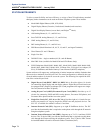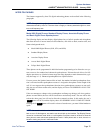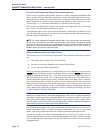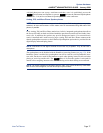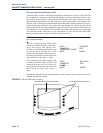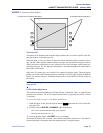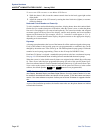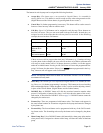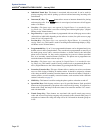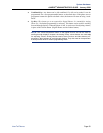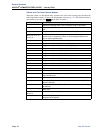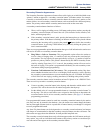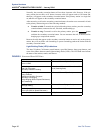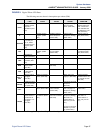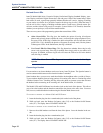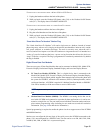
Page 82
System Hardware
AXXESS
®
ADMINISTRATOR’S GUIDE – January 2004
Inter-Tel Phones
• Individual Trunk Key: This button is associated with one trunk. It can be used for
placing outgoing calls, and for picking up calls on hold and answering incoming calls
on that trunk.
• Intercom (IC) Key: The button allows access to intercom channels for placing
and answering calls. If an button is not assigned, an intercom call will appear
under a Call button.
• Next Key: (This button type is not required for Digital Phones. It is intended for Ana-
log Phone use.) This button is used for scrolling forward through displays. (Digital
Phones use the Volume button.)
• Page Zone Key: A page zone button is programmed with one of the page access codes
(9600-9609 or 9600-9649 depending on the software version) for quick access to page
zones (0-9 or 0-49 respectively).
• Previous Key: (This button type is not required for Digital Phones. It is intended for
Analog Phone use.) This button is used for scrolling backward through displays. (Digi-
tal Phones use the Volume button.)
• Programmable Key: Up to 35 user-programmable buttons can be designated and given
default values in the keymap database. They can then be reprogrammed to enter any of
the trunk group access codes, extension numbers, or feature codes by the individual
phone users as desired. Or, they can be programmed as system or station speed-dial
bins, or as secondary extension buttons (see below). The phone user or programmer can
return the buttons to default values at any time.
• Save Key: (This button type is not required for Digital Phones. It is intended for Ana-
log Phone use.) This button is used for saving volume levels or programmed phone fea-
tures. (Digital Phones use the Volume button, by pressing both ends at once.)
• Secondary Extension Key: This type of button allows a station user to have one-button
access to calls ringing or holding at another station. It should be assigned to a button
with a lamp so that the secondary extension button can show the call status. If desired, a
station can have several secondary extension buttons, each associated with a different
station. For details, see page 85.
• SPKR Key: This button is used for turning the phone speaker or headset on and off.
• Speed-Dial Keys: Each keymap can have up to 10 speed-dial buttons. Each speed-dial
button can be programmed by the phone user to dial one digit string. If assigned to a
button with a lamp, the lamp will show the status of an extension number if it is associ-
ated with that button.
• Trunk Group Key: These buttons are associated with specific trunk group access
codes and are used for placing outgoing calls on trunks in the selected trunk group. If
assigned to a button with a lamp, the lamp will be lit if all trunks in the trunk group are
in use.
IC
IC



